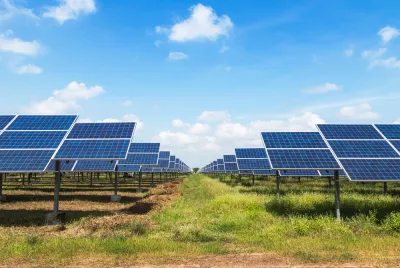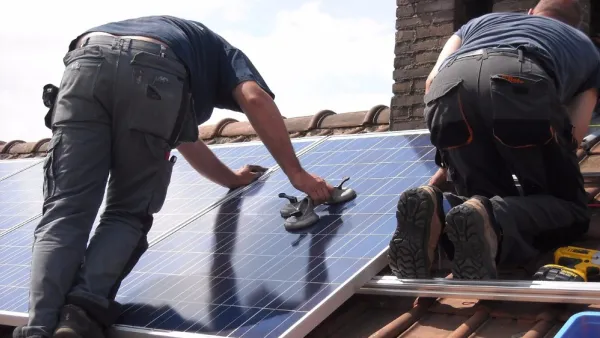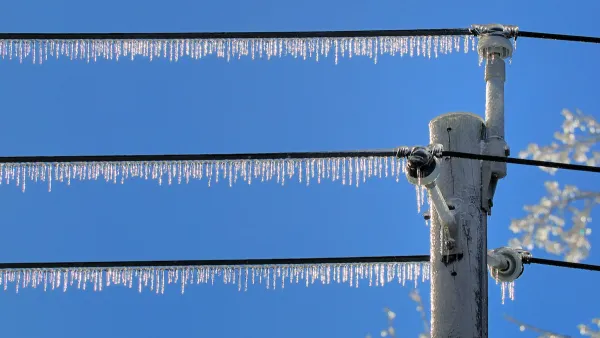One of solar’s biggest challenges is getting the energy where it needs to go.

The solar energy industry is growing by leaps and bounds as local utilities and companies that operate energy-guzzling data centers seek out renewable energy sources, report Spencer Kimball and Gabriel Cortés for CNBC.
“But renewables face a massive bottleneck to get connected to the grid, and building out transmission lines to support the growth poses a big challenge,” the authors add. Renewable energy sources remain just 3.9 percent of the nation’s power mix in 2023, and the nation’s aging power infrastructure is struggling to keep up with demand, which is growing in part due to the growth of data centers as well as rising temperatures and growing populations.
While “Nearly 2,500 gigawatts of solar, wind and battery projects were requesting connection in 2023, almost double the entire installed capacity of the current U.S. power plant fleet,” one analyst notes that “The rate by which renewables are deployed would need to at least triple to achieve 90% clean electricity over the next decade.” Plants that came online in 2023 took roughly five years to complete, and just 20 percent of projects with applications submitted between 2000 and 2018 were completed.
But solar is making significant gains, too. “In California, for example, solar energy represented more than 50% of the state's power supply from 7:45 a.m. until 5:25 p.m., peaking at about 18 gigawatts or 64% of supply around 1 p.m., according to Grid Status, which tracks major U.S. grids in real time.”
FULL STORY: Solar is growing faster than any electricity source as Big Tech seeks clean energy for data centers

National Parks Layoffs Will Cause Communities to Lose Billions
Thousands of essential park workers were laid off this week, just before the busy spring break season.

Retro-silient?: America’s First “Eco-burb,” The Woodlands Turns 50
A master-planned community north of Houston offers lessons on green infrastructure and resilient design, but falls short of its founder’s lofty affordability and walkability goals.

Delivering for America Plan Will Downgrade Mail Service in at Least 49.5 Percent of Zip Codes
Republican and Democrat lawmakers criticize the plan for its disproportionate negative impact on rural communities.

Test News Post 1
This is a summary

Test News Headline 46
Test for the image on the front page.

Balancing Bombs and Butterflies: How the National Guard Protects a Rare Species
The National Guard at Fort Indiantown Gap uses GIS technology and land management strategies to balance military training with conservation efforts, ensuring the survival of the rare eastern regal fritillary butterfly.
Urban Design for Planners 1: Software Tools
This six-course series explores essential urban design concepts using open source software and equips planners with the tools they need to participate fully in the urban design process.
Planning for Universal Design
Learn the tools for implementing Universal Design in planning regulations.
EMC Planning Group, Inc.
Planetizen
Planetizen
Mpact (formerly Rail~Volution)
Great Falls Development Authority, Inc.
HUDs Office of Policy Development and Research
NYU Wagner Graduate School of Public Service





























